Why Emergency Preparedness Plans Are Crucial for Businesses Amidst the Pandemic


As companies start bringing people back to in-person work at offices and facilities, the health protocols of those work environments are more top-of-mind than ever, often in ways that never occurred to people before the COVID-19 pandemic. The nature of how office spaces are designed will likely change as well, moving from high-density workspaces to reconfigurations that allow for greater distancing, changing utilization patterns, and more opportunities for employees to control their work environment — building job satisfaction and ensuring staff feel safe.
No matter what, people will be more likely to demand to know that their work spaces are healthy. To that end, the International WELL Building Institute (IWBI) built upon its widely adopted WELL Building Standard to develop the evidence-based, third-party verified WELL Health-Safety Rating for Facility Operations and Management for building managers to both help protect occupants from COVID-19 today as well as build resilience for the future.
A science-based standard for healthier and safer spaces
Released in July 2020, the new rating includes more than 20 features across five core areas: Emergency Preparedness Programs, Cleaning and Sanitization Procedures, Health Service Resources, Air and Water Quality Management, and Stakeholder Engagement and Communication. At least 15 of these criteria must be met in order for a space to be rated.
When considering a well-being rating for a building, emergency preparedness may not come immediately to mind, but having a plan in place to effectively and efficiently handle an emergency ensures that a building owner is equipped not only to immediately address a crisis, but also successfully recover in its aftermath. Consider how, in March 2020, most offices shut down at once when the coronavirus began to spread. Now over a year and a half later, those same building owners have to figure out how to safely return to operation. Lessons learned from responding to the pandemic can also apply to preparing for other emergencies.
A focus on emergency preparedness builds resilience for the future
According to the International Federation of Red Cross and Red Crescent Societies, natural disasters have killed more than 410,000 people in the past 10 years and have affected a further 1.7 billion. Stress, a common side effect of surviving a natural disaster, can weaken the immune system, putting people at greater risk of contracting viruses like COVID-19 and encountering other health problems. The pandemic itself is an emergency that has moved with alarming speed due to factors such as international trade and travel and increased urbanization, infecting over 213 million people and counting.
Therefore, in considering what core areas should comprise the rating, IWBI naturally went to emergency preparedness as one of them. “Building code sets a foundation for several types of emergencies,” Nathan Stodola, chief engineer at IWBI, told TriplePundit. “For example, requiring strategies to fight fires and allowing for egress, or structural seismic design requirements in areas prone to earthquakes. But this only touches the surface of what those in a building should be preparing for, with gaps in topics such as entry requirements and business continuity plans.”
Understanding exit during and reentry after a disaster is critical for continuing business operations in the aftermath of an emergency. On average, about 25 percent of U.S. small businesses do not reopen after a natural disaster, according to the U.S. Federal Emergency Management Agency (FEMA). The lack of an appropriate emergency preparedness plan thus affects not only the building owner, but also its occupants and the broader economic health of the community.
Prioritizing emergency preparedness in buildings
In determining what the emergency preparedness pillar of a building standard would look like, IWBI first had to decide what constitutes an emergency. “We include a number of categories that are relevant to most buildings,” Stodola told TriplePundit. These include the obvious like natural disasters, fires and health events, as well as others that are less expected, such as technological emergencies and human-caused events. “Within these categories, different buildings will have different emergencies that are most relevant,” he explained. “For example, a building in Japan might need a tsunami response plan while one in Oklahoma would more likely need to prepare for tornadoes.”
Further, preparing for emergencies like global pandemics means having a clear exit strategy as well as a plan to ensure that the building is a healthy place for people to return to when it’s safe.
IWBI consulted with 600 public health experts, virologists, government officials, academics, business leaders, architects, designers, building scientists and real estate professionals around the world while updating its WELL Building Standard Version 2 to identify pandemic-related needs, and it crafted relevant features into the WELL Health-Safety Rating. The rating is third-party verified.
The features of the rating “draw on recommendations from the Federal Emergency Management Agency, the Centers for Disease Control and Prevention, the World Health Organization, and leading academic research,” Stodola said.
The rating requires building owners to develop an emergency preparedness plan that lays out procedures and protocols for reacting to an emergency situation when it arises. This feature already exists in IWBI’s WELL Building Standard, and is one of the most frequently pursued in the WELL Health-Safety Rating. Other features include requirements to develop a business continuity plan to preemptively prepare for operating during emergencies, and a plan for a healthy re-entry back into the building during or following an emergency.
Based on the experience with COVID-19, the core area has a recently-added feature, which requires building owners to establish health entry requirements. “This newest feature rewards buildings that, when there is a heightened risk of infectious respiratory disease transmission, require individuals to be vaccinated against the disease or present a recent negative test,” Stodola explained.
Preparing for emergencies and the future
In the past year and a half, as most people have worked remotely, a work environment that prioritizes health has become even more expected. The COVID-19 pandemic is far from over, and anxiety about shared work spaces will likely increase. Knowing that a building owner has put in place certain safeguards to promote the health of the people within the space is reassuring.
Still, far more needs to be done to prepare for emergencies and unforeseen events into the future. As we witnessed during the pandemic, in addition to physical health, people’s mental health has also been impacted. Companies need to be prepared for any kind of catastrophe in order to protect their long-term viability and, of course, the well-being of their employees. A healthy building can help address both.
This article series is sponsored by the International WELL Building Institute (IWBI) and produced by the TriplePundit editorial team.
Image credit: Stocksy via IWBI
This Beer Brand Pledged $100 Million to Women’s Sports

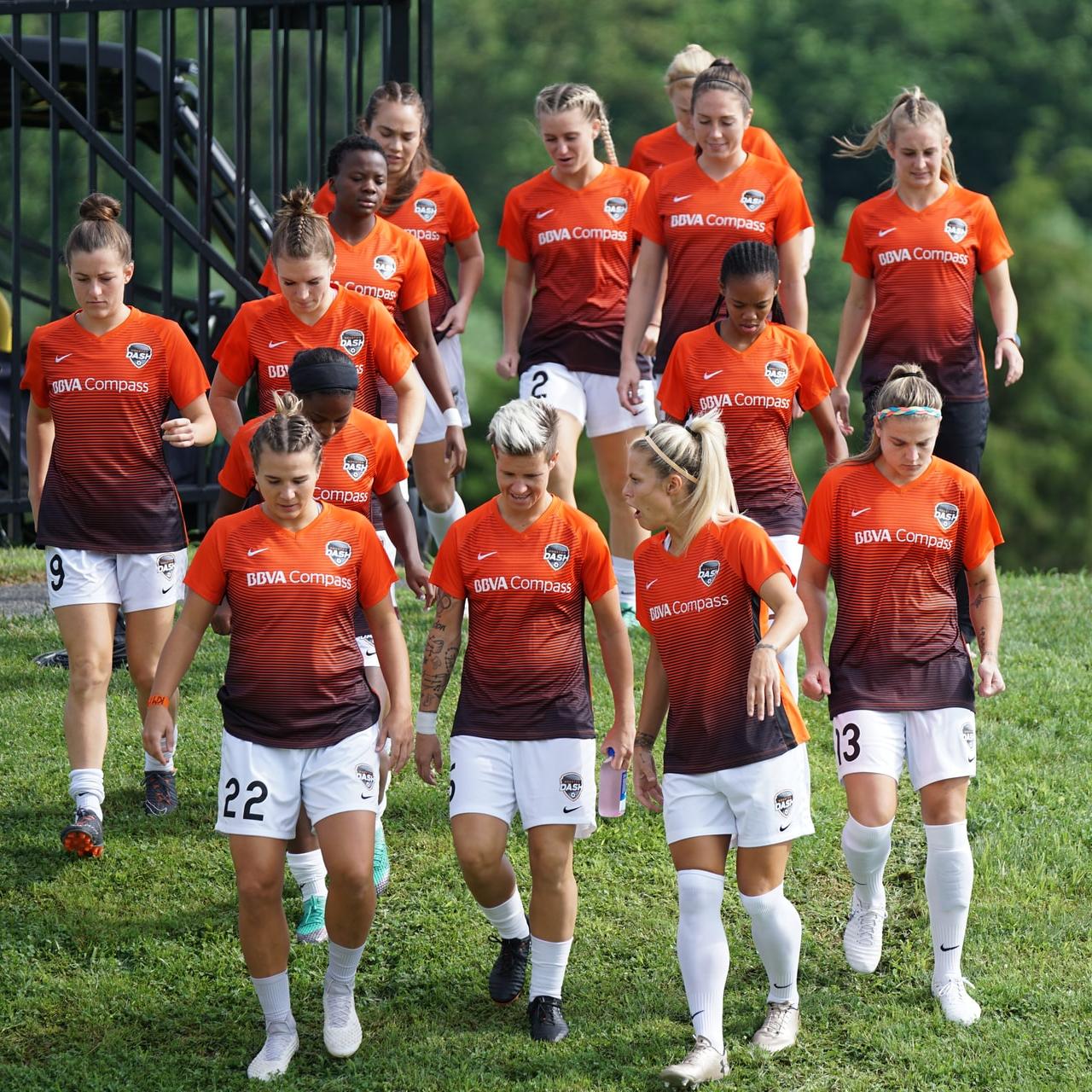
To help female athletes achieve their full potential, the beer brand Michelob Ultra recently announced a $100 million commitment to women’s sports over the next five years. In addition, the Anheuser-Busch brand pledges gender balance in its advertising creative, talent endorsements, lifestyle media and sponsorships by 2025.
Michelob Ultra made this commitment to women's sports with the launch of the “Save It, See It” campaign, urging fans on social media to boost the visibility of female athletes. As part of the push for equal pay, the brand says it is working to elevate female athletes. The company made the announcement on Women’s Equality Day, which just occurred last week.
“Coming off the [Olympic] Games where women did exceptionally well and brought home more medals than men, we believe it’s the right time to keep people watching women’s sports,” said Ricardo Marques, Michelob Ultra’s marketing vice president said in a Forbes interview.
Historically, women have had fewer opportunities to participate in sports, but significant gains have been made since the early 1970s. Yet, 1.13 million more boys participate than girls in the U.S., according to 2018-2018 data from the National Federation of State High School Associations. It’s clear much work still lies ahead.
The advantages of participating in youth sports are undeniable, especially for teenage girls, who often suffer from a lack of confidence. The physical benefits of sports include lower obesity, blood pressure and reduced risk of cardiovascular disease. Psychologically, the benefits include improved wellbeing, a stronger sense of belonging, and greater self-esteem. Academically, studies have suggested that some students involved in athletics show greater academic achievement and higher college attendance and retention.
The Women's Sports Foundation surveyed over 2,300 women working in sports and released a national research report, "Chasing Equity: The Triumphs, Challenges and Opportunities in Sports for Girls and Women.” The report found that the gender gap in sports is getting smaller, yet it persists. If the benefits are so great, the lack of opportunity could hinder women from reaching their full potential.
“I just think participation in sport does so much for the well-being of girls – it builds their confidence, helps manage stress/mental health, and prepares them to handle failure, knowing that the next day may be when they win. It is great preparation for a career,” said a survey participant.
Michelob Ultra has a roster of female athletes known for bringing equality to women's sports. Nneka Ogwumike is the WNBPA President and a voice for female athlete representation.
As the first openly transgender female athlete to win an NCAA title, CeCe Telfer is an LGBTQ+ champion. Andraya Carter is a basketball analyst, reporter, former NCAA athlete and inclusivity advocate. As a leader in sports marketing, the company is well-positioned to make a difference.
"It's not just about making a statement today," says Nneka Ogwumike, President of the WNBA Players Association. "It's also about setting goals and taking actionable steps toward gender equality on and off the court, which is why I'm proud to be a partner of Michelob Ultra and will continue to support their commitment to women's sports equality."
This follows a recent trend for athletics to serve as drivers of social change. For example, LeBron James is helping to increase assess to voting for felons and Black Lives Matter was stenciled on the NFL fields and NBA courts.
"Michelob Ultra is proud to be a longtime partner of female athletes and organizations, and as a leader in both the beer and sports marketing industries, there's so much more we can do to help support equal pay when it comes to women's sports," said Marques in a press release.
"We need to set the example, and the time for equality has always been now. Our commitment demonstrates Michelob Ultra’s core belief that female athletes deserve an equal experience, whether they're on the court, in the newsroom, or on our TV screens."
Image credit: Jeffrey F. Lin/Unsplash
Employers Drop the Hammer on Vaccine Refusers, With Caution
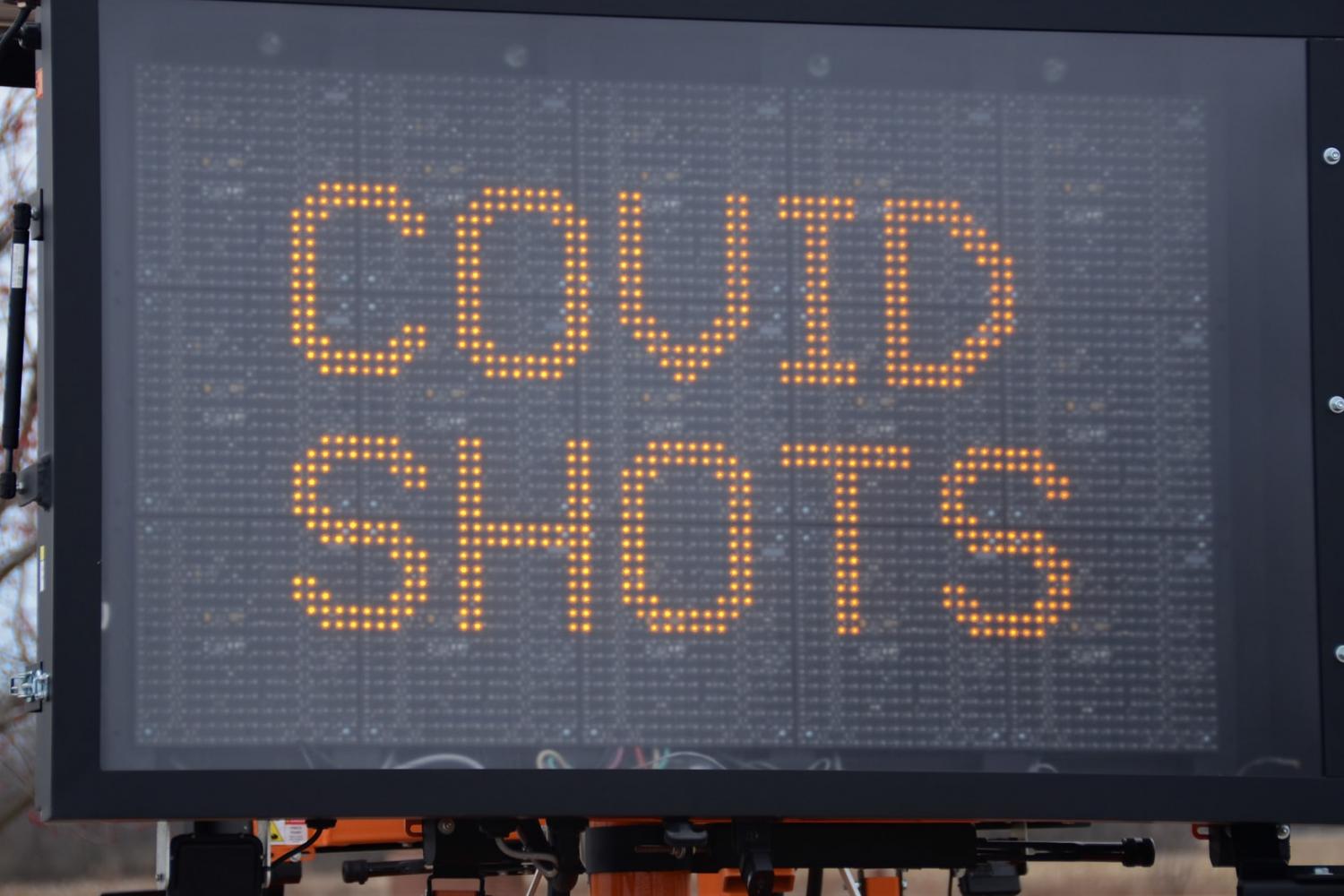

When the U.S. Food and Drug Administration (FDA) finally granted full approval to the Pfizer COVID-19 vaccine last week, it seemed that the door was closed on vaccine refusers once and for all. However, employers who seek to mandate the vaccine for their employees still face many pitfalls and obstacles.
Some experts have argued that employers have always been well within their rights to mandate a COVID-19 vaccine, even under the emergency use authorization provided by the FDA.
In a recent piece for The Atlantic, Juliette Kayyem of the Kennedy School of Government echoed the sentiments of many when she argued that the time has come to stop pacifying vaccine refusers.
“Getting a shot to protect yourself and others from COVID-19 is both a social responsibility and the best way to hasten the end of the pandemic, and if you don’t believe that, we’re not waiting around for you to step up,” she wrote.
However, reality in the world of corporate healthcare is more complicated than that.
The case made against stringent vaccine mandates
Depending on the types of employees within the workforce, some large corporations may feel that vaccine refusers will simply quit rather than keep their jobs, potentially leading to labor shortages that force shutdowns and cutbacks.
Others may be concerned about blowback from labor unions, or lawsuits brought by individuals.
Somewhat ironically, the 1996 Health Insurance Portability and Accountability Act and the 2009 Affordable Care Act strengthened protections against discrimination based on various factors including body mass index as well as gender, race, disability and pre-existing conditions. That has further complicated the legal environment for employers seeking to impose penalties on employees based on their vaccination status.
As described by reporter Clare Bugos of VeryWell Health, smoking is one of the few exceptions to federal health insurance protections, and that issue is typically handled through corporate wellness programs.
The wellness program strategy appears to be the path taken by Delta Airlines. The company became a sort of canary in the vaccine coal mine last week, when it announced a steep hike in insurance rates for unvaccinated workers.
Other companies, though, appear to be waiting to assess the legal repercussions for Delta before taking the plunge. So far, corporate and government vaccine “mandates” typically provide an escape hatch by offering the alternative of weekly testing.
The case for mandates and the case against vaccine refusers
Despite the complications, in recent weeks vaccine refusers have been getting a cold, hard dose of reality. The new Delta variant is attacking millions of unvaccinated Americans, many of whom bought into unserious ideas about the COVID-19 virus all during the pandemic. Now their bodies are beginning to pile up in morgues all over the country.
Media attention has also begun to focus on the deaths of high-profile pundits and influencers known for spreading false information about the COVID-19 virus, the effectiveness of masks, and the safety of vaccines.
In recent days the death toll has included three high profile talk radio hosts who were killed in recent weeks by the very virus they dismissed: Florida-based Marc Bernier and Dick Farrel, as well as Tennessee-based Phil Valentine.
The three deaths have garnered widespread attention in the media, as has the death this week of Caleb Wallace, a well-known COVID-19 denier with a wide reach on social media.
Follow the money
In effect, COVID-19 deniers and vaccine refusers are beginning to make their own case for a vaccine mandate.
Further undermining faith in COVID-19 deniers is the increased media attention to the money mill behind some of the high-profile personalities who promote quack cures and discourage vaccination.
The money factor is important as the vaccines are free and proven safe, and masks are inexpensive. People who refuse vaccines and masks in favor of “cures” and treatments costing hundreds of dollars are not questioning their own decision, but others certainly can, and will, judge them.
One example recently cited by Agence France Presse is Sherri Tenpenny, an Ohio osteopath.
“From a $240 premium podcast annual membership to $165 webinars on why people ‘should not take the shot,’ health supplements and ticketed public speaking, Tenpenny runs a sprawling enterprise based on anti-vaccine activism, disdain for masks and testing, and denials that COVID-19 is real,” AFP reported.
Another example comes through Florida Governor Ron DeSantis, who has become notorious for his efforts to stop local jurisdictions from requiring the simple, effective precaution of face masks. Last week the Miami Herald reported that the governor has been taking advice from the Los Angeles-based psychiatrist Dr. Mark McDonald, who “is among a fringe group of outspoken medical professionals who have pushed ivermectin as an alternative to widespread vaccination against coronavirus.”
According to the Miami Herald, McDonald has ties to America’s Frontline Doctors, a group known for selling quack cures including the common livestock deworming medication ivermectin.
On the heels of a three-month investigation into America’s Frontline Doctors, last week Time magazine reported that “hundreds of AFLD customers and donors have accused the group of touting a service promising prescriptions for ivermectin…Some customers described being charged for consultations that did not happen. Others said they were connected to digital pharmacies that quoted excessive prices of up to $700 for the cheap medication.”
The long, slow death of anti-science
In some ways, the persistence of vaccine refusers mirrors the money machine that has fueled climate change denial. One key difference is that top climate change deniers generally have the financial resources to protect themselves from climate change impacts, leaving others to scramble to recover after drought, fire and floods destroy their homes and livelihoods.
In contrast, some of those who spread COVID-19 falsehoods and publicly rail against vaccines are just as vulnerable to serious illness and death as any member of their audience.
Perhaps the bloody trail of COVID-19 will finally convince more of the voting public to stop getting information from their “friends” on the Internet and start listening to fact-based scientific research.
In reality, though, millions already seem beyond reason. Difficult and complicated they may be, corporate vaccine mandates, with no opt-out for regular testing, are the only recourse.
Image credits: Roger Starnes Sr./Unsplash; Joshua Hoehne/Unsplash
Why We Should Nudge Employees Toward Trying Meditation

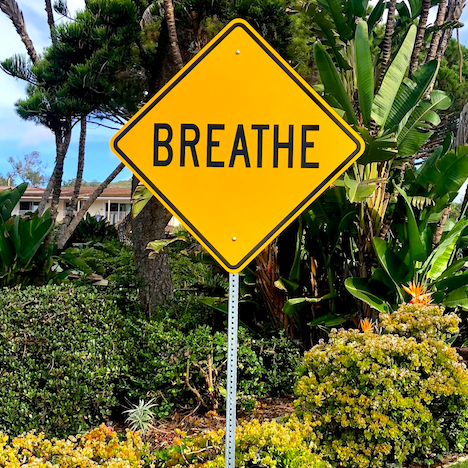
Among the many reasons why we’ve heard so much about the “Great Resignation” this year is that employees who became fed up with their workplaces have cited the need to take care of their mental health first and foremost. Add the fact that this summer we saw athletes including Simone Biles decide that athletic mega-events be damned, they were going to take care of themselves.
So, 18-plus months into this pandemic, here’s the stubborn truth: If your company has not invested in additional mental health resources, or at a minimum outlined the options available as part of existing benefits packages, then your human resources department is at a minimum disturbingly negligent.
But no matter what your company’s available resources or your personal finances may be, there is a compelling option to consider even if you are not capitalizing on any mental health resources at hand: meditation.
How you go about exploring the benefits of meditation are up to you. Find a trusted resource such as a friend or valued colleague, or check out the various apps, YouTube videos or books on the subject.
But if the HR department is scratching its collective head and asking around about any new potential employee benefits, an all-inclusive meditation app should be in the cards.
Recently, my healthcare plan gave me full access to the Calm app. Long story short, all the chill pills I had consumed in my adult life were not doing the trick. Plus, recent events led to what the doctors said was far too much anxiety for the human body and brain to handle. Among the suggestions for treatment was a full subscription to the Calm app.
While I had understood there are benefits to practices such as yoga and meditation, I was skeptical at first — probably because I’ve binged on far too many episodes of Ab Fab and recent Netflix series to take them seriously. But a few weeks into harnessing Calm, I can see that it has made a difference. There’s something to be said about decompressing at any point during the day and focusing on one’s inner self.
Part of the infatuation I have with Calm is the slight boy crush I’ve developed on Tamara Levitt, who narrates many of the sessions available on Calm — all of which are designed to help reduce stress, fall asleep, reflect on the day ahead or, of course, hone the ability to embrace meditation and completely unplug. It's also well-designed, easy to use and offers many options for listening at any point during the day.
Like any app, Calm has its own strengths and weaknesses that depend on the user. Listening to bedtime stories read by the likes of Regé-Jean Page and Idris Elba turned out to be more of a thirst trap and less of an effective means to fall asleep. Nevertheless, at a bare minimum, there’s something to be said about taking the time out to concentrate on your breathing, and while it’s not easy for many of us to turn off those negative thoughts, it’s worthwhile learning to relegate them as passing thoughts instead of letting them linger.
As we’re starting, here’s a fair question: What can be the toughest part of engaging in meditation? It’s the scheduling. Begin by tucking a daily entry into your calendar. It’s up to you whether you want to allow it to be set as “public,” or set it as private if you’d rather avoid any nosy inquiries. And make sure it’s clear that it’s not something a colleague can schedule over — this bit of time, even if only 10 to 15 minutes daily, is necessary because you’re worth it.
At a time when the news surrounding us is adding even more uncertainty and worry, a line item for a service such as a meditation app on the company ledger is a valuable investment. Try out several of them and decide on one that can offer employees that quick yet much-needed break from the daily virtual or in-office routine.
Image credit: Bob Osias/Unsplash
In Midst of the Pandemic, U.S. Wind Power Industry Scores Record-Breaking Year


Between supply chain disruptions and labor shortages, the COVID-19 pandemic has wreaked havoc with various sectors in the construction industry. However, the increasing demand for wind power in the U.S. has outweighed other factors. Last year the domestic wind industry set another record for turbine installation, and the numbers indicate that further growth is in store.
Wind power in the U.S. is a bipartisan issue, sometimes
The U.S. has a vast amount of untapped wind potential located in waters offshore, due to its long coastlines. Unfortunately, technological and political obstacles have often blocked the construction of large offshore wind farms in U.S. waters to date.
The political obstacles to the offshore wind industry have been coming mainly from the Republican side of the aisle, but the situation is different on land. The technology for land-based wind turbine projects is well in hand, and state lawmakers have the ability to make or break wind power development on their turf. While some Republican officials have thrown up wind farm roadblocks in some states, others have run with the wind power ball.
For example, the red state of Texas has been a pacesetter for the U.S. wind industry, a status that arose during the long tenure of former Governor Rick Perry. Oklahoma is another state that has built a strong wind energy profile under Republican governorship. Similarly, Iowa has been a wind energy frontrunner, thanks partly to longstanding support from Republican U.S. Senator Chuck Grassley.
U.S. wind power by the numbers
Despite the state-by-state, patchwork pace of wind power development in the U.S., the industry as a whole has enjoyed vigorous growth, as outlined in the new Land-Based Wind Market Report issued by the U.S. Department of Energy’s Lawrence Berkeley National Laboratory.
“More wind energy was installed in 2020 than any other energy source, accounting for 42 percent of new U.S. capacity,” the Energy Department observed.
According to the new report, the U.S. added a record-setting 16,836 megawatts in new utility-scale wind power capacity in 2020, even as the nation was — and still is — in the grip of the COVID-19 pandemic.
Berkeley Lab also singled out a group of Republican-governed states for special attention.
“Most notably, wind power provided 57 percent of Iowa’s in-state electricity generation, while wind provided more than 30 percent of electricity in Kansas, Oklahoma, South Dakota and North Dakota,” the lab reported, adding that “Texas installed the most capacity with 4,137 MW.”
Other epicenters of wind power development in 2020 cited by Berkeley Lab included the Republican-governed states of Iowa, Oklahoma, Wyoming and Missouri along with Illinois, one of the few currently Democratic-governed states to top the list.
Wind power: smaller is okay, too
The Energy Department has also taken a look at small-scale wind power development through the 2021 edition of the Distributed Wind Market Report, produced by the Pacific Northwest National Laboratory.
The distributed wind sector can refer to wind turbines of practically any size, not just small ones. The deciding factor is the use of wind turbines to provide electricity to the site where they are located, or to nearby distribution grids.
In 2020, the distributed wind sector added 14.7 megawatts in capacity. That pales beside the number racked up by the utility-scale wind power sector. However, the impact on local economic development is significant, especially in rural areas. The report notes that agriculture accounted for 36 percent of distributed wind projects in 2020, and industrial customers accounted for 37 percent. Utilities and residential customers filled in the remainder.
In one especially interesting trend, early adopters of small wind turbines in raw distributed wind sector have been taking advantage of new, more efficient turbine technology.
“Small wind retrofits — new turbines installed on existing towers and foundations — have become more common, accounting for 80 percent of small wind capacity installed in 2020,” the report noted.
The interest in retrofits is also occurring in the utility-scale end of the wind power industry, where the first generation of wind farms is approaching 20 years of age or more. Having made the investment in turbine towers, land and transmission lines, developers can realize more capacity from the same wind farm by “repowering” old wind turbine towers with new technology.
What about offshore wind power?
The sorry state of the U.S. offshore wind industry stands in sharp contrast to the situation on land. A grand total of just 42 megawatts in capacity is currently located off the Atlantic coast, consisting of Rhode Island’s five-turbine, 30-megawatt Block Island wind farm and the first two turbines of the planned Skipjack wind farm off the coast of Virginia.
Nevertheless, the 2021 Offshore Wind Market Report, produced by the National Renewable Energy Laboratory (NREL), provides a glimpse into the potential for enormous growth in job creation if political roadblocks can be overcome.
NREL counts a total of 35,324 megawatts worth of new offshore wind power in the pipeline for 2020, representing a 24 percent increase over 2019.
Unfortunately, the political roadblocks working against offshore wind power have taken a legal turn, in which the conservative “bill mill” organization ALEC reportedly has a hand.
Business leaders who see a future in wind power could help the offshore wind industry catch up to land-based development, by cutting off the money spigot that keeps ALEC and its allies alive.
Image credit: Cameron Venti/Unsplash
ALEC Connection Continues to Stalk U.S. Offshore Wind Industry


The on-again, off-again U.S. offshore wind industry seemed to have leaped a significant hurdle last spring. That’s when the Biden administration green-lighted the proposed Vineyard Wind project in Massachusetts, as the nation’s first ever large-scale offshore wind farm. However, a new lawsuit with links to the lobbying group ALEC threatens to halt the project, and the uncertainty could have a ripple effect on 16 other offshore projects in the pipeline along the Atlantic coast.
What is the matter with the U.S. offshore wind industry?
The troubles of the U.S. offshore wind industry present a stark contrast to the rapid pace of wind energy development on land. Despite Republican-led efforts to quash the industry in some states, wind farm development in other states pushed forward at a rapid pace all during former President Obama's tenure and throughout the Trump administration. As of last year, the nation’s onshore wind farms had a total capacity of well over 122,000 megawatts.
By comparison, the offshore wind industry has been at a virtual standstill. Only one offshore wind farm, Rhode Island’s Block Island project, is currently in commercial operation within U.S. waters. Block Island’s five wind turbines have a total of only 30 megawatts. Two other turbines totaling 12 megawatts will eventually become part of the larger Skipjack wind farm off the coast of Virginia, unless halted in court.
The U.S. offshore industry was supposed to pick up speed after 2009, when the Interior Department’s Bureau of Ocean Energy Management (BOEM) streamlined its approval process for leasing federal offshore areas. However, during the Obama administration, large swaths of the Pacific Coast and Gulf of Mexico were out of reach, along with the coasts of Maine and New Hampshire, mainly due to technology gaps and other feasibility considerations.
That left the early pace of offshore wind development up to policy makers in just 12 Atlantic Coast states, where conditions are ideal for offshore turbine construction.
Unfortunately for offshore wind power stakeholders, at least five of those states — New Jersey, North Carolina, South Carolina, Georgia and Florida — were foot-dragging during the Obama administration, reportedly due to the political influence of ALEC, the American Legislative Exchange Council (ALEC), a lobbying organization widely regarded as a conservative “bill mill.”
Even so, BOEM continued to lease out areas under its new streamlined process during the Trump administration. After Biden took office, the 800-megawatt Vineyard Wind project became the first one to achieve final approval under the new process earlier this year, making it a sort of bellwether for 16 other projects in the pipeline.
ALEC vs. Vineyard Wind
Within the next few years, Vineyard Wind and the 16 other offshore wind projects will add 1,500 turbines to the U.S. offshore wind portfolio — unless something stops them.
And, once again, it looks like ALEC could have a hand in stopping, or at least delaying, all 16 projects.
As reported by Molly Taft of Gizmodo, last week a group of citizens filed a lawsuit against the Vineyard Wind project, under the name of Nantucket Residents Against Turbines. Among other charges, the suit alleges that BOEM did not sufficiently account for risks the project could pose to the endangered North Atlantic right whale.
Taft traced the ALEC connection through one of the lawsuit’s supporters, David Stevenson. He is a director at the Delaware-based Caesar Rodney Institute, which Taft describes as a “libertarian think tank.”
CRI is a member of the State Policy Network, an organization linked to ALEC partly through its roots in the former Madison Group. Greenpeace, among others, has noted that the State Policy Network organizes its efforts around ALEC policy positions.
One of CRI’s focus areas is offshore wind, and Stevenson is listed as policy director under a set of leasing recommendations for BOEM. The proposed guidance would force BOEM to terminate existing offshore leases and refund any monies paid to the lease holders.
Taft also notes that CRI is launching the new American Coalition for Ocean Protection, “specifically to fight offshore wind projects.”
The offshore wind ripple effect
As for whether or not the Vineyard Wind lawsuit will have an impact other Atlantic Coast projects, Stevenson himself clarified the issue during a press conference on the issue last week.
Reporter Charles Megginson of Delaware’s Town Square Live covered the press conference and cited Stevenson as stating that "it’s going to affect all of the offshore wind projects.”
“This is the first industrial-sized offshore wind project to be approved and the environmental impact statement is seriously flawed, the record of decision they used to get the permit is seriously flawed, and the Bureau of Ocean Energy Management used those flawed documents to approve this project,” Stevenson added.
Some legal analysts are skeptical that the lawsuit will succeed, partly because it rests on allegations that the project would pose a threat to the endangered north Atlantic right whale population.
Megginson cites Dr. Jeremy Firestone of the University of Delaware’s Center for Wind Research, who noted that the offshore wind industry has developed mitigation strategies that reduce if not eliminate risks to whales and other marine life.
“The biggest threat to right whales is and remains commercial ship strikes,” Firestone notes. That brings up the question of why the Nantucket lawsuit aims at an offshore wind project and not at the commercial fishing industry. NOAA also cites fishing gear entanglements as a leading threat to right whales in the Atlantic.
Another expert, cited by Gizmodo, noted that climate change is another significant threat to the north Atlantic right whale population. Climate change has been linked to changes in migration patterns as the whales seek food, leading them into new areas where risk mitigation strategies have not been developed, and increasing the chances of deadly encounters with human activity.
But, but, my view!
In a twist of irony, the same coastal communities that are most at risk from climate change have also played a role in slowing the development of the U.S. offshore wind industry, due to objections over the sight of wind turbines on the horizon.
Efforts to preserve a pristine view of the ocean can give rise to some unusual alliances. For example, a member of the Kennedy family and a member of the Koch family were both reportedly instrumental in bringing legal action that slowed, and eventually halted, the propose Cape Wind project in Massachusetts.
Cape Wind was the very first utility-scale wind farm proposed in the U.S., before BOEM finalized its new permit process. The demise of Cape Wind could be considered an outlier, now that the new process is in place. However, the Vineyard Wind lawsuit could upend all that work.
Like the legal action against Cape Wind, the Vineyard Wind controversy has also created unusual alliances.
Reuters reports that the solar company Allcore has also filed a lawsuit against Vineyard Wind. Allcore owner Thomas Melone, who owns property on Nantucket Sound, cites impacts on his view as well as impact on whales.
Offshore wind power has a future in the U.S., eventually
One development that could render the view issue moot is the recent emergence of floating wind turbine technology, which enables wind farms to be situated in deeper waters far offshore, where they are invisible.
Floating turbines also rely on tethers to stay in place instead of sunken piles. That could further mitigate some of the impacts associated with conventional fixed-platform construction.
Meanwhile, the Vineyard wind lawsuit provides leading U.S. corporations with yet another reason to cut ties with ALEC.
By 2012, ALEC’s work in lobbying against climate legislation had already driven Coca-Cola and several other top brands to drop ties to the organization.
Since then, dozens of others have quit over ALEC’s position on gun rights, hate speech and other controversial issues.
More recently, ALEC’s reported ties to the critical race theory canard and the January 6 insurrection have come to light.
ALEC has been regarded as a pro-business organization, but the cumulative impact of its actions is to foster fear, uncertainty and chaos. That’s not exactly a formula for bottom line sustainability, either terms of the global environment or in human society, too.
Image credit: Andrey Sharpilo/Unsplash
HBCUs and Tech Leaders are Joining Forces to Increase Tech Opportunities for Black Students
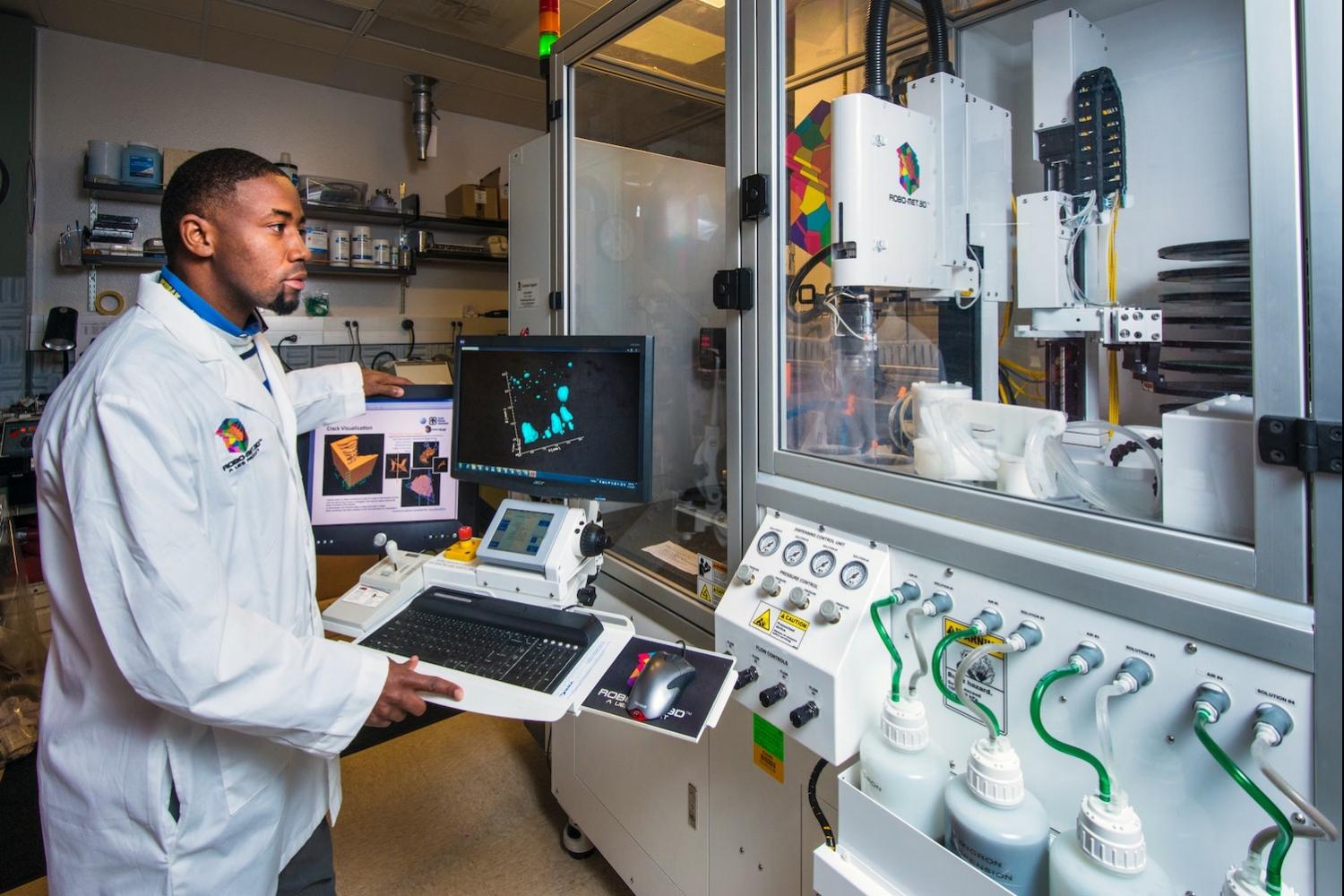

(Image: Black Americans hold only 7 percent of tech industry jobs, like this role as a materials scientist working with 3D printing. Could HBCUs and tech leaders come together to bring more people of all backgrounds into the industry?)
Black Americans make up 12 percent of the total U.S. population yet hold only 7 percent of tech industry jobs. The numbers in higher-level roles are even more staggering: Four percent of tech managers and less than 2 percent of C-suite tech executives are Black, according to the U.S. Equal Employment Opportunity Commission.
Why the discrepancies? Many companies, when posed this question, respond that the issue lies in the “pipeline” of talent: There are not enough qualified Black candidates applying for open tech positions. While many of these claims have been debunked, it is true that there needs to be a concerted push for expanded science, technology, engineering and math (STEM) education and job training in Black communities.
Historically Black colleges and universities (HBCUs) are a natural fit for many of these programs. According to the UNCF, America’s approximately 100 HBCUs produce almost 25 percent of all STEM degrees received by Black students.
Here are several factors contributing to the racial divide in STEM education and careers and how HBCUs are partnering with tech companies to bring about change and equity in the industry.
Providing internet access and building exposure to STEM in early years
When schools shifted to remote learning models last year in response to the coronavirus pandemic, much attention was paid to the digital divide, or the lack of reliable internet in marginalized communities. At least 12 million kindergarten through 12th grade students in the U.S. — including 2 million Black students — do not have reliable high-speed internet access at home.
This June, HP launched its Partnership and Technology for Humanity (PATH) Initiative, which is a program to help HP accelerate digital equity for 150 million people worldwide by 2030. As part of PATH, HP co-sponsored the virtual PATH Summit to explore what it will take to reach digital equity in the next 10 years. During the summit, Dr. Dennis Kimbro, a professor at Clark Atlanta University, an HBCU, said: “Research has shown if a child engages in internet activities during elementary school, they will do it in their career. If you don’t expose them in these younger years, the game is over.”
Dr. Almesha L. Campbell is assistant vice-president for economic and research development at Jackson State University (JSU), an HBCU in Mississippi. She further underscored the transformative power of college-based summer programs on introducing middle-schoolers to STEM careers: “Sometimes, college can be too late as students already have developed beliefs like ‘math is too hard,’ ” she told TriplePundit. “At JSU’s Young Innovators Program, we explore entrepreneurship, virtual reality (VR) and 3D printing. By the time these students get to college, they will blow us away with what they can achieve.”
Unlocking practical experience with real-world technology
Familiarity and hands-on experience with the latest technologies can go a long way in helping college students discern the direction of their educational and career interests. HP has partnered with several HBCUs to provide cutting-edge technology to enhance students’ academic experiences.
Last year, HP launched a pilot program with North Carolina A&T State University centered on 3D printing. The tech giant not only provided the equipment, but it also made a commitment for internship and apprenticeship opportunities for students. HP launched a similar program with JSU focusing on VR headsets and expects to roll out future collaborations with JSU built around 3D printing.
Providing more exposure to professional organizations and decision-makers
Campbell said HBCUs provide students with a rich sense of community. “It is a family dynamic, and we carry that with a sense of pride,” she told us. “We make sure we bring that pride to the opportunities we provide our students.”
Lesley Slaton Brown, chief diversity officer at HP, said this community aspect makes it even more crucial for tech companies to welcome HBCU graduates’ uniqueness and talent.
“We don’t just want to seek out their talent, but build opportunities,” Slaton Brown said. “It’s less about getting our company logo on signage and more about building relationships.”
Another way in which HP has partnered with HBCUs is through the HBCU Business Deans’ Roundtable. HP joined the Roundtable as a founding member in 2017 and in that same year sponsored the first HBCU Business Challenge. During that competition, students gain practical business experience as they work on their business plans and obtain mentorship from HP executives to learn more about the industry and employment opportunities. Since the inaugural challenge, more than a dozen participants have gone on to accept positions with HP.
Connecting what’s taught in the classroom to what is needed in the workplace
In the ever-changing world of technology, there can be a gap between what skills are taught in the classroom and what skills are most needed in the workplace. There’s also a greater need to accelerate digital transformation as schools had to shift to online learning in days, not years, due to COVID-19.
To address these challenges, HP is joining with Hewlett Packard Enterprise, Intel and Microsoft this September to present the inaugural HBCU Technology Conference. The conference comprises three separate tracks, each designed for a particular segment of the HBCU community: IT departments; faculty and administration; and students. For the student track, there will also be a Bot-a-Thon in which students can gain hands-on automation skills, and top finalists have the opportunity to interview for internship positions at HP and Microsoft.
“This conference will offer direct access to tech corporations and the opportunity to brainstorm in a nonjudgmental environment to better prepare students,” Slaton Brown said. “We can share the HP technology we are proud of but, more importantly, we can help decision-makers be equipped for the careers of the future.”
Campbell, who is on the planning committee for the student track of the conference, said the event has piqued the interest of students at JSU. “Students are excited to build their résumés. I see their hunger for learning – a hunger to know new things and interact with new technology,” she said. “Imagine how freshmen can transform their next three years of education and the classroom experience if they attend this conference — they will have a whole new network of connections.”
Click here for more information on the HBCU Technology Conference.
This article series is sponsored by HP and produced by the TriplePundit editorial team.
Image credit: Unsplash/Science in HD
WaterScope: Meet the Team Using Machine Learning to Ensure Water Is Safe to Drink


Now that the Cisco Global Problem Solver Challenge 2021 winners have been officially announced, we are excited for you to learn more about each winning team and the story behind each innovation. The Cisco Global Problem Solver Challenge is an annual competition that awards cash prizes to early-stage tech entrepreneurs solving the world’s toughest problems. Now in its fifth year, the competition awarded its largest prize pool ever, $1 million USD, to 20 winning teams from around the world.
When Alexander Patto, Nalin Patel, Tianheng Zhao, and Richard Bowman joined a water purifier project at Cambridge University, they were tasked with answering the question, “How do you tell whether the water is pure?” They realized quickly that the process around testing the microbiology of water hadn’t changed in over 30 years. Globally, water-born bacterial infections lead to over 500,000 diarrheal related deaths each year, which is over 2,000 deaths every day (more than malaria and HIV combined). Current water testing equipment is bulky, expensive and takes at least a day to give results. Alex and his team tried to work out how they might improve the process and after about a month of trying to solve the problem, they co-founded WaterScope.
What problem is your technology solution trying to solve?
Alex: Access to information that will give people better drinking water sources. It’s trying to solve both inequality and in particular, bacterial contamination. At the moment, if you were to go into Tanzania, and there was a public tap, there’s just no way of knowing whether the water is safe to drink. The community is quite removed from the testing facility that comes in. So, what we’re trying to do is make a test that anyone can understand whether the water has got bacterial contamination. Currently the systems are very complicated. The WaterScope system aims to be empowering for the community. It allows the community to put mechanisms in place, to clean the water locally and get sustainable change at a local level.
Can you explain how the solution works?
Alex: At the moment, there’s two parts to the solution. First is the technology, which enables simple, portable bacterial testing, and then once you have the data and once you have the technology, and it’s being used, the second challenge is how then do you convert that to have impact back on the lives of people on the ground?
A person in the village would collect water from the source and they would filter it through our reusable cartridge. The cartridge has a disposable element to it which allows it to maintain the integrity of the test. The purpose of the cartridge is to take the lab into the field. It condenses the [testing] process into a small cartridge. Once they have the filtered sample, they put it into WaterScope’s imaging system, and they incubate it for up to 18 hours. Then, they take it out and capture an image, and at Waterscope we use machine learning to identify the bacteria. The importance of this method is that whoever is collecting the sample doesn’t have to be trained in microbiology.
After the results are captured, they are sent in real time to our database, which will then allow mapping and then intervention from potential governance. It allows for real time intervention. It also gives locals the agency to purify and periodically clean their water supply.
What inspired you to develop this solution?
Alex: It just fell together. I was doing my PhD in genetics at Cambridge, and I found myself getting far removed from the impact I wanted to have. I was actively participating in outreach projects and bumped into three people who had similar inclinations. We found more scope based on some research that was being done in Physics, and we thought, maybe we can have an impact. I didn’t expect it to become my full-time job. We got a bit of funding from the university and from the humanitarian innovation fund, and we managed to get a pilot done. Having looked at the scale of the problem, it just felt right to do what we’re doing full time.
How will winning a prize in the Cisco Global Problem Solver Challenge help you advance your business?
Alex: We’ve got prototypes that we’ve tested in the field. Now Waterscope is looking to convert these prototypes to post-production prototypes for manufacturing and understanding how we keep the costs down. We also want to keep those distribution channels open allowing us to get it to people who need it. The other side is firm up the software, improving machine learning, improve the way we use cloud technology, and flesh out more of the community impact side of things. We’re aiming to commercialise by the end of 2022.
Waterscope is looking to use the funding to match fund an implementation project where we’ll work with ten potential communities to understand how we can have an impact on the key community stakeholders.
How has the global pandemic impacted your work?
Alex: Quite significantly. We had a project funded by the United Kingdom government last year in which we were going to fly to Tanzania to train and collaborate field partners on the system, run workshops with community members, and the pandemic hit. So, we had to think around how to still get that field data and community data form the system without leaving the UK. We ended up reaching out to more people and spent a lot of time building a solid relationship over video conferencing. The benefit being now we have great partners on the ground, they’re very familiar with our system and that probably wouldn’t have happened before. We would have normally done an intensive week or two in the field and left again, so the pandemic changed our approach to trials. We now have that longevity with our partners. It’s also far more inclusive than it would have been, it doesn’t beat the face-to-face meeting and seeing someone use our technology. We’ve done a lot and we’re better for it, so we’re thankful for that.
Why did you decide to start your own social enterprise versus going to work for a company?
Alex: You get moments where my peers are out in London as consultants, earning a lot of money, and they enjoy that. I haven’t really thought about it too much. I find my days really fulfilling, I work with great people and I’m so fortunate that we now have our own company. It’s liberating. I find it hard imagining what it would be like to work for another company now because I’m so used to working with the WaterScope team. Funding is a constant battle, though.
My family has been supportive of this. My dad’s a builder and my mum’s a renovator. They’ve always worked for themselves, since I was young. I grew up on a farm in Wales and I’m the first person to go to university in my family. I think my mum sent the Cisco challenge voting to all her friends. It’s also something they can all get behind. When I was in the nitty gritty of research, conversations around dinner might be on cells and protein. It really wasn’t gripping. Now, it’s very easy to communicate the importance of what we’re doing, and people are naturally invested.
What advice do you have for other social entrepreneurs?
Alex: Get a good partner. A partner you can rely on. Get an advocate on your technology in assessing where it’s used. Fundraising is hard. You’ll need resilience because you will apply for a lot of grants and funding streams, you’ll only get about 10 percent of them. You need to be able to handle rejection and failure. You’ve also got to build your network as strong as possible. Working in things like incubators certainly helps. We got into a fellowship here and there, that put us in contact with like-minded people, it was really helpful because my previous contacts were all academics. Get an advisory board, they will help you get other people involved. Try not to say ‘no’ to any opportunity that comes along. I give a couple of lectures in university and talks at events; you always meet new people. As long as you’re open to those opportunities, it will come. Get involved with some universities, their networks are vast.
Stay tuned for more articles in our blog series, featuring interviews with every Cisco Global Problem Solver Challenge 2021 winning team!
Previously published in the 3BL Media newsroom.
Image credit: mrjn Photography/Unsplash
Could Seaweed Be Key to More Recyclable Packaging?

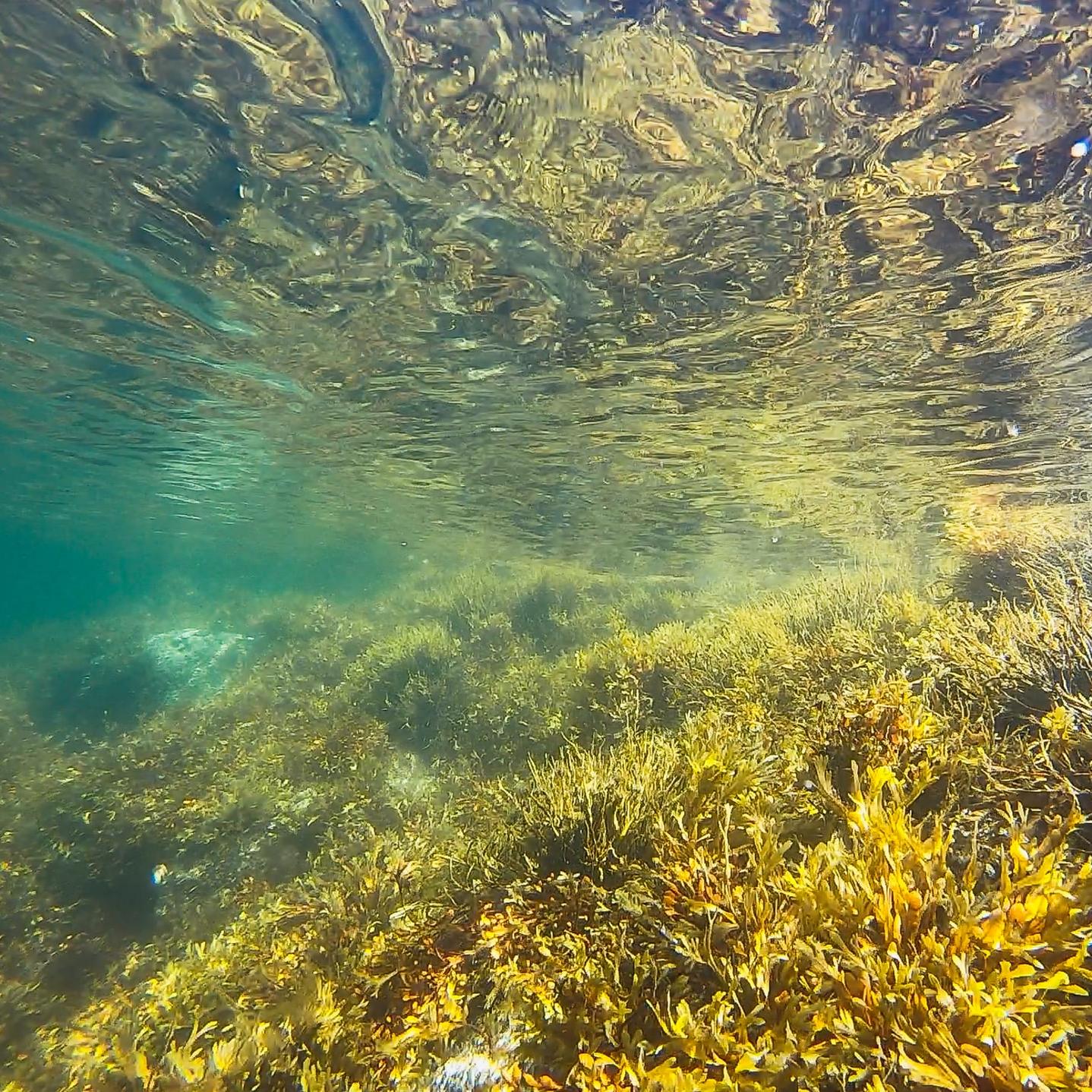
As consumer demand for more sustainable packaging increases, DS Smith is researching the use of seaweed in paper and packaging products. In particular, the British multinational packaging company is exploring seaweed as an alternative fiber to wood. If successful, it would be the first company in the packaging industry to take this approach. The company is also examining the potential of seaweed as a barrier coating, potentially replacing petroleum-based products.
“As a leader in sustainability, our research into alternative raw material and fiber sources will help us drive this project forward, looking at seaweed’s strength, resilience, recyclable properties, scalability, and cost. Seaweed could have multiple uses with a low ecological footprint that is easily recyclable and naturally biodegradable,” said Giancarlo Maroto, the managing director of paper, forestry, and recycling for DS Smith North America.
According to Maroto, the production process could reduce energy consumption and require fewer chemicals to extract the fibers. When considering any alternative fiber, however, it is critical to examine how to sustainable use the resource. There is concern about the proper management of seaweed resources to balance environmental risks and conserve marine resources.
Seaweed is already used in cosmetics, pharmaceuticals, agriculture, food and animal feed. In Asia, long-term cultivation of seaweed has existed for decades, often in the form of aquaculture. By contrast, it is relatively new in Europe. Typically, ideal nutrient, light and temperature levels are critical to cultivate a particular species. Increasingly, seaweed is being seen as an attractive option for furthering the sustainability movement, but using a sustainable approach is critical for achieving these objectives.
DS Smith has yet to release specific information on the feasibility of seaweed in its products, such as which species it is creating and how it would be recycled. For example, could existing recycling infrastructure be used and what are the options for sourcing seaweed? These are key factors for evaluating the sustainability of the potential product.
Earlier this year, DS Smith announced it will invest $140 million in a five-year circular economy research and development program. Its intention is to fast-track next-generation technology and collaborate with partners to create fiber-based and fully recyclable solutions. The goal is to create 100 percent recyclable packaging within two years and take 1 billion pieces of problematic plastics off supermarket shelves by 2025. By 2030, the company plans to offer 100 percent recyclable or reusable packaging.
One of its strategies is to identify the top ten difficult to recycle items and find solutions for a circular economy. Interestingly, the company is literally thinking outside the box by challenging itself to eliminate 250,000 truck journeys from the roads. One way to achieve this is to optimize transport by reducing wasted air in transit. DS Smith is also launching an educational campaign to engage 5 million young people in the circular economy by 2030.
In addition to seaweed, the company is also exploring other alternative fibers, such as straw, hemp and silvergrass. Also, more unusual sources include agricultural waste including cocoa shells or the fiber leftover from sugarcane processing.
Currently, about only 9 percent of plastics are recycled in the U.S., due to a variety of problems including difficulties in recycling certain plastics, the low cost for recycled plastic and the lack of recycling infrastructure. In addition to serving as an excellent move for a more sustainable society and economy, such sustainable packaging products could be effective in satisfying consumer demand.
Increasingly, shoppers are thinking about the ocean plastic crises and recyclability when making purchases. According to a survey from the Boston Consulting Group, 67 percent of consumers say they think it is important that the products they buy are in recyclable packaging. And, 54 percent take sustainable packaging into account when choosing a product.
Will seaweed be a key ingredient in the circular economy? It seems very promising.
Image credit: Brian Yurasits/Unsplash
App Eliminates Food Waste, Supports Local Businesses and Saves Users Money: Too Good To Go Is Almost Too Good To Be True
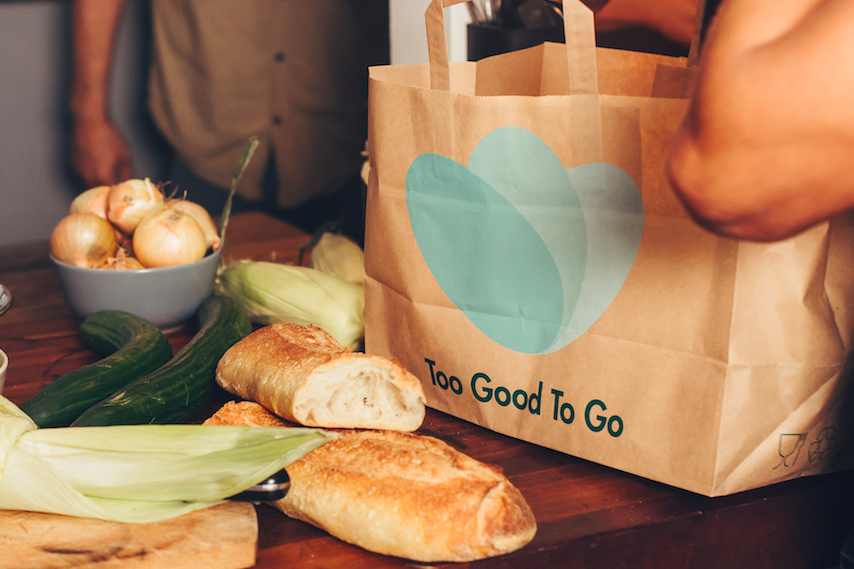

Discounted food, supporting local business, eliminating food waste and an element of surprise - the only thing Too Good To Go, a food app committed to ending food waste, is missing is a market in my stomping grounds of Atlanta (reference “heartbroken” in the dictionary for an apt description of how I felt when I realized this).
The app serves as a marketplace for hungry users looking to score “surprise bags” from restaurants dealing with a surplus of food. Instead of a bakery, for example, tossing away its unsold baguettes and croissants at the end of the night, a bread-loving consumer may pop into the app and purchase the goods at a fraction of the market rate. Too Good To Go calls its commitment to reducing food waste, trading otherwise trashed food for profits for business owners and boosting savings for hungry consumers a win-win-win.
The company started in Denmark in 2016 but quickly moved across international borders into major European markets. In 2020, it made the leap across the pond into North America, debuting in New York City and Boston in late September. In just a year’s time, Too Good To Go has expanded to 11 major North American cities spanning the U.S. and Canada, with Baltimore the latest to join the likes of Philadelphia, San Francisco, Chicago and Toronto.
In five years of operation, Too Good To Go has made a lasting impact in the communities it serves, already establishing itself as the world’s largest business-to-consumer marketplace for surplus food. All in all, it’s helped its 43.5 million users connect to more than 108,000 businesses (restaurants, bakeries, supermarkets, hotels, etc.) to save 88 million meals, and counting.
With an estimated 1.3 billion tons of food wasted worldwide, accounting for one-third of food produced for human consumption, this social impact company knows it’s facing one of the world’s largest problems. Too Good To Go’s CEO Mette Lykke is hoping that its tangible meals saved for its users can serve as a springboard for bringing a cultural change around the way the world sees food waste.
“Food waste is a huge, complicated issue that spans the globe, and we know that by working alone we can only achieve so much,” Lykke wrote in Too Good To Go’s 2020 Impact Report. “It’s this notion - of shared inspiration, of collective impact, of a movement against food waste, that helped us arrive at our ultimate mission: to inspire and empower everyone to fight food waste together.”
The Impact Report follows the journey of a banana from harvest to supermarket shelf, explaining the complex supply chain and deep human and environmental resources that were poured into a single banana. If a consumer buys that very banana, waits until it's overripe and finds it no longer appetizing, they may be inclined to throw it out considering the low personal financial cost of that 50-cent banana. What the consumer may not consider is all the energy and resources expended into getting that banana to their fruit bowl - the fertilizer produced at a factory with a considerable carbon footprint, the water to spur growth, the fuel used to carry bananas via trucks, ships and airplanes, even what goes into making the sticker that adorns the bananas. The second the banana hits the trash, all the energy emitted is wasted.
Beyond saving meals in these surprise bags, Too Good To Go has challenged itself to become a global resource for food waste, establishing a Knowledge Hub and a range of educational food waste tools for school- and university-aged students. It’s also influencing food waste at a policy level, zeroing in on bringing consistency and clarity to the confusing world of “use by” vs. “best before” vs. “sell by” expiration labels. Food waste due to confusion over date labels is not insignificant - a 2018 European Commission study found that 10 percent of food waste in the European Union can be traced to people misinterpreting these labels. Too Good To Go has been partnering with local and national governments as well as businesses around the EU to harmonize these expiry labels and bring awareness around safe food consumption.
As part of this cultural anti-food waste wave Too Good To Go is generating, the company’s social feeds are flooded with helpful tips and guides to preventing food waste. Even the craftiest food savers have something to gain from perusing its posts, like pouring unused coffee into ice cube holders or turning pineapple peels into iced tea.
So yes, when Too Good To Go does eventually enter the Atlanta market, I can guarantee it will have at least one happy customer. Until then, I’ll continue to refresh its Instagram page for city launches and sip on my new favorite drink: pineapple iced tea.
Image credit: Too Good To Go